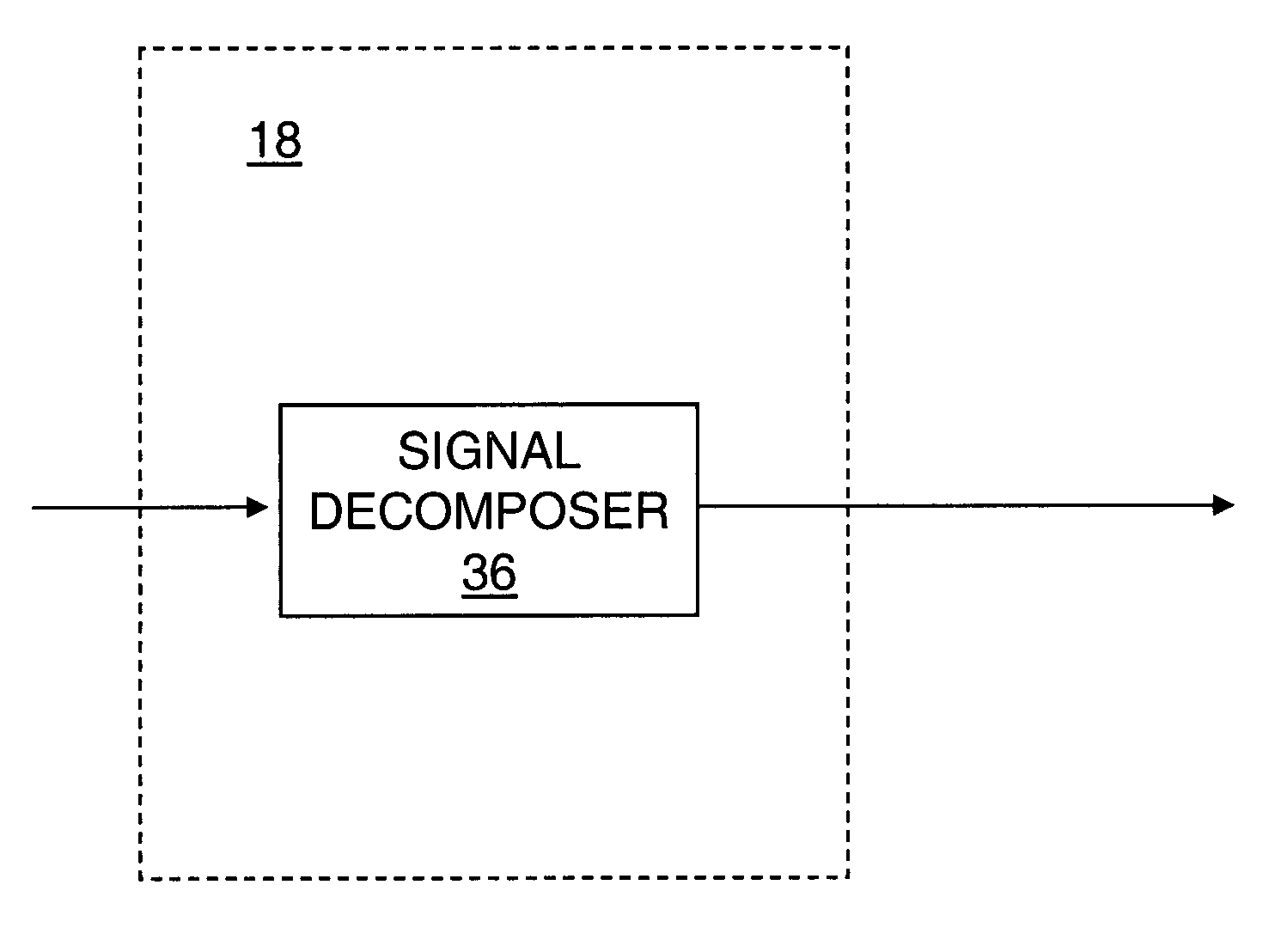Methods and apparatuses using proximal probes
a technology of proximal probes and probes, applied in the direction of mechanical measuring arrangements, mechanical roughness/irregularity measurements, instruments, etc., can solve the problems of difficult phase image interpretation, shift a certain amount of power to higher harmonics, and difficult to obtain force trajectories in tapping mode. achieve the effect of overcompensating the noise inherent in the cantilever deflection signal
- Summary
- Abstract
- Description
- Claims
- Application Information
AI Technical Summary
Benefits of technology
Problems solved by technology
Method used
Image
Examples
example 1
Simulation Demonstrates the Applicability of SPAM Analysis in Fluids
[0057]Numerical simulations were performed with Simulink and Matlab (MathWorks Inc., Natick, Mass.) using a single degree of freedom model of tapping mode AFM cantilever based on Equation 1. When the tip-sample separation distance z from the surface is large enough, the tip never touches the surface, and the external force can be approximated using a well-known expression for the van der Waals interaction between a sphere and a flat surface:
Fext=−HRtip / 6z2 (5)
where H is the Hamaker constant and Rtip is the tip radius. With the decrease of distance D0, the tip eventually begins to strike the surface at the bottom of each oscillation cycle. Under these circumstances, the tip-sample force can be described using the Derjaguin-Muller-Toporov (DMT) model:
Fext=4 / (3πκeff)√{square root over (Rtip)}(aDMT−z)3 / 2−HRtip / 6aDMT2 (6)
where aDMT is the intermolecular distance parameter of DMT potential, and κeff=(1−v12) / (πE1)+(1−v22...
example 2
Application of SPAM in Differentiating Between Surface Properties in Fluids
[0073]FIG. 11 illustrates a series of fluid tapping mode AFM images of a supported brain lipid extract bilayer on mica demonstrating the use of higher harmonics in imaging and the ability to spatially resolve the tapping force. Exposed mica is clearly seen in standard height (FIG. 11a) and amplitude (FIG. 11b) images as well as the maximum force map (FIG. 11c) acquired from the AFM experiment. FIG. 11d illustrates a histogram of the maximum tapping forces from an image of a bilayer on a mica surface. Two Gaussian distributions of maximum tapping force are clearly resolved from each other that correspond to the soft bilayer and the rigid mica surface, demonstrating that relative elastic properties of the sample can be spatially resolved using the present invention. The use of a sliding window Fourier transform comb-filter to reconstruct a noisy real deflection signal of a fluid tapping-mode AFM experiment is d...
example 3
Application of SPAM in Studying Changes in Surface Properties in Fluids
[0079]A function ascribed to cholesterol residing in bilayer membranes is to alter acyl chain mobility, and the net effect of cholesterol on bilayer fluidity varies based on the lipid composition and temperature. At the lipid content and concentrations commonly found in eukaryotic plasma membranes, the effect of cholesterol is usually to make the membrane more rigid. With the knowledge that lipoprotiens exposed to bilayers swelled most likely due to cholesterol uptake, it is reasonable to predict that the mechanical properties of the bilayers would also change. TBLE bilayers contain a large percentage of cholesterol, and removal of this cholesterol from the bilayer would alter their fluidity. To explore this possibility the present invention was employed to determine if lipoproteins could alter the fluidity of TBLE bilayers. Using the relative value of maximum tapping force, force maps were constructed for bilaye...
PUM
| Property | Measurement | Unit |
|---|---|---|
| concentration | aaaaa | aaaaa |
| frequencies | aaaaa | aaaaa |
| resonance frequency | aaaaa | aaaaa |
Abstract
Description
Claims
Application Information
 Login to View More
Login to View More - R&D
- Intellectual Property
- Life Sciences
- Materials
- Tech Scout
- Unparalleled Data Quality
- Higher Quality Content
- 60% Fewer Hallucinations
Browse by: Latest US Patents, China's latest patents, Technical Efficacy Thesaurus, Application Domain, Technology Topic, Popular Technical Reports.
© 2025 PatSnap. All rights reserved.Legal|Privacy policy|Modern Slavery Act Transparency Statement|Sitemap|About US| Contact US: help@patsnap.com



